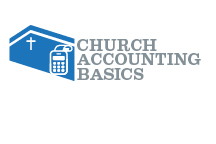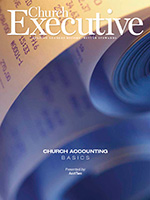 By Tammy Bunting
By Tammy Bunting
The Bible has a clear definition of faith in Hebrews 11:1 — “Now faith is the assurance of things hoped for, the conviction of things not seen.” Simply put, the biblical definition of faith is “trusting in something you cannot explicitly prove.”
As church leaders, we walk every day in faith. So, how do we marry faith and facts? The church has been put in our care, and we must be good stewards of what God has given us.
So how do we care for the church?
I sat down with Dennis Richards, executive pastor of Preston Trail Community Church in Frisco, TX, to get his thoughts.
When asked his definition of a healthy church, the first thing Richards mentions is spiritual, not financial. Richards says he believes that “doing church” is not about a beautiful building or a large staff (although he understands that neither of those are bad). Rather, a healthy church stays focused on the mission of helping people come to know Christ. “And if we don’t … well, then, we’ve missed the target.”
Those of us who are financial managers in the church seem to be more black-and-white. Don’t get me wrong: We, too, have a heart for lost souls. But, we want a very cut-and-dried approach.

When I asked Richards if he connects the budget with the vision, he responds with a very non-financial view. “Actually, I see it as the opposite,” he explains. “We don’t connect the budget with the vision — but the mission drives the budget. If we’re not accomplishing our ministry, the budget is irrelevant. The budget may not be as large as we like, we still work within our means, but we stay focused on the strategies laid out by our leadership and make sure every dollar counts.”
A “mission-squared” life
As the executive pastor at his church, Richards wears many hats. When asked how he ensures programs and ministries are in line with the vision of Preston Trail, he quotes Andy Stanley: “A mission statement is what gets lived out in your halls, not what hangs on your wall.”
To this end, Richards is constantly monitoring his church’s mission, as well as its values, strategies and measurements. “It’s those things that propel not only our metrics showing how we are doing, but also drive us to the risky faith of determining our budget dollars.”
For Richards, the most difficult metric is life transformation. But by taking attendance — whether in worship (how many people at church on Sunday) or during the week in small groups — he says he can get a good picture.
Baptism is also a key indicator of life transformation for Richards, as is the growth of the church’s serving teams and attendance of care and recovery classes. “This validates that we’re truly living out what God has called us to do,” he points out.
 For Richards, this “mission-squared” life, as he calls it, is not restricted to our country, but reaches beyond our borders to the communities in less fortunate countries. “The generosity of the congregation to support our efforts, which is to engage our world, clearly establishes the unified front of our church and whether we’re getting the message out.”
For Richards, this “mission-squared” life, as he calls it, is not restricted to our country, but reaches beyond our borders to the communities in less fortunate countries. “The generosity of the congregation to support our efforts, which is to engage our world, clearly establishes the unified front of our church and whether we’re getting the message out.”
As Dennis and I talked, I decide to throw him a curve ball: I ask if there are elements of the “business” of doing church that concern him.
“We have grown as an organization and are faced with new realities,” he replies. “One area is managing to the employment law. The church should be the finest example of how an organization should be run — not only its systems, but also how it manages and treats its employees.” To this end, Richards advocates that church leaders seek wise legal counsel in the areas in which they lack a clear understanding, and reach out to learn about the critical components that ensure compliance with governmental regulations and laws.
“Employment law is the most obvious, but we’re being hit with licensing issues — the sharing of pictures, for one — that can cost us mission-critical dollars in fines,” he poses. “Even though we live a risky faith, what God has called us to be, we must be great stewards of the resources we have. One of the greatest resources of any organization is its people. We must pay attention to the rules and regulations so that resource is protected.”
As we look at the business of church, we must always be mindful of God’s intent for us,” Richards concludes. “Being a healthy church can mean different things to other leaders; but no matter your definition, know your mission and understand the huge responsibility placed in your care.”
Tammy Bunting is the Director of Not-for-Profit Services at AcctTwo, which provides cloud-based financial management software and outsourced accounting for churches. AcctTwo’s solutions help churches automate processes, increase accuracy, and provide a complete financial picture.



Once the eBook is visible to you in Issuu.com, make it full-screen (as denoted by an icon in the lower right-hand corner with two arrows pointing in opposite directions). Once you’ve done that, click the box-with-an-arrow-in-it icon in the lower right of the screen. This will let you download the eBook to your computer. Hope this helps! Feel free to reach out to me directly (rslaybaugh@churchexecutive.com) if you have any other issues.
i am not able to download the eBook “Church Accounting Basics” Please help